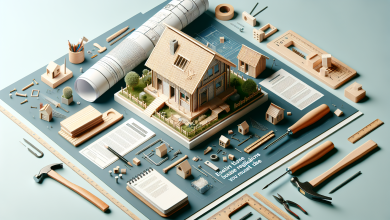Tiny House vs. Traditional Home: Key Pros and Cons
Tiny House vs. Traditional Home: A Comprehensive Comparison
Tiny House vs. Traditional Home is a debate that has garnered attention as more people question traditional living standards. This article explores the differences, advantages, and disadvantages of both housing options. Readers will learn about the tiny house movement, key features of each type of home, and the pros and cons associated with them. By the end, you will have a clear understanding of which option may suit your lifestyle best.
Tiny House vs. Traditional Home: An Overview
The Tiny House Movement is a social and architectural trend that promotes living simply in small homes. Tiny houses typically range from 100 to 400 square feet and are designed to maximize space while minimizing environmental impact. This movement is often associated with downsizing, sustainability, and financial freedom.
On the other hand, traditional homes vary significantly in size, style, and functionality, but they generally provide more square footage and space for families or individuals. Traditional homes often include multiple rooms, larger kitchens, and expansive living areas. When comparing tiny house vs. traditional home, size and layout are the primary differentiators.
Understanding these key features helps identify what might work best for your lifestyle, whether you prioritize simplicity and mobility or space and comfort. Tiny House vs. Traditional Home: Pros and Cons Explained hakkında daha fazla bilgi edinin.
Pros and Cons of Tiny House vs. Traditional Home
When evaluating Tiny House vs. Traditional Home, it’s vital to consider the various advantages and disadvantages. Each option offers unique benefits and challenges that cater to different lifestyles.
Advantages of Choosing a Tiny House
One of the primary advantages of a tiny house is its affordability. The lower purchase price means less debt and lower monthly expenses, allowing for greater financial freedom. Additionally, tiny houses often have lower utility bills due to their size and energy-efficient designs.
Another significant benefit is the simplicity of living in a tiny home. With less space, individuals are encouraged to declutter and focus on what truly matters, fostering a minimalist lifestyle. Moreover, the mobility of many tiny homes allows homeowners to travel or relocate without the hassle of moving to a new property. Financing Your Tiny Home: Essential Tips for Success hakkında daha fazla bilgi edinin.
In summary, the advantages of tiny houses often appeal to those seeking a more straightforward, cost-effective lifestyle.
Disadvantages of Tiny House vs. Traditional Home
Despite the benefits, there are notable disadvantages when considering Tiny House vs. Traditional Home. One significant drawback is space. The limited square footage can lead to feelings of confinement, particularly for families or individuals who enjoy hosting.
Additionally, zoning laws and regulations can complicate the placement of tiny houses, making it challenging for homeowners to find suitable land. While traditional homes offer more room for expansion or renovation, tiny houses can feel limiting over time. Living Off-Grid in a Tiny House: A Complete Guide hakkında daha fazla bilgi edinin.
Understanding these disadvantages can help potential buyers make an informed choice about what type of home will meet their needs effectively.
Conclusion: Tiny House vs. Traditional Home
In conclusion, the Tiny House vs. Traditional Home debate presents various pros and cons that cater to different lifestyles. Tiny houses offer affordability, simplicity, and mobility, making them ideal for minimalists or those seeking financial freedom. However, they do come with limitations in space and potential legal hurdles. On the other hand, traditional homes provide more room and comfort, appealing to families or individuals who value space and flexibility.
Ultimately, the decision between a tiny house and a traditional home should be based on your personal lifestyle, needs, and preferences. For more information, consider exploring resources from Tiny House Community or Architectural Digest for insights into the tiny house movement.




